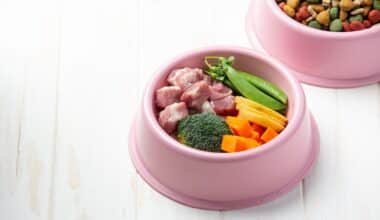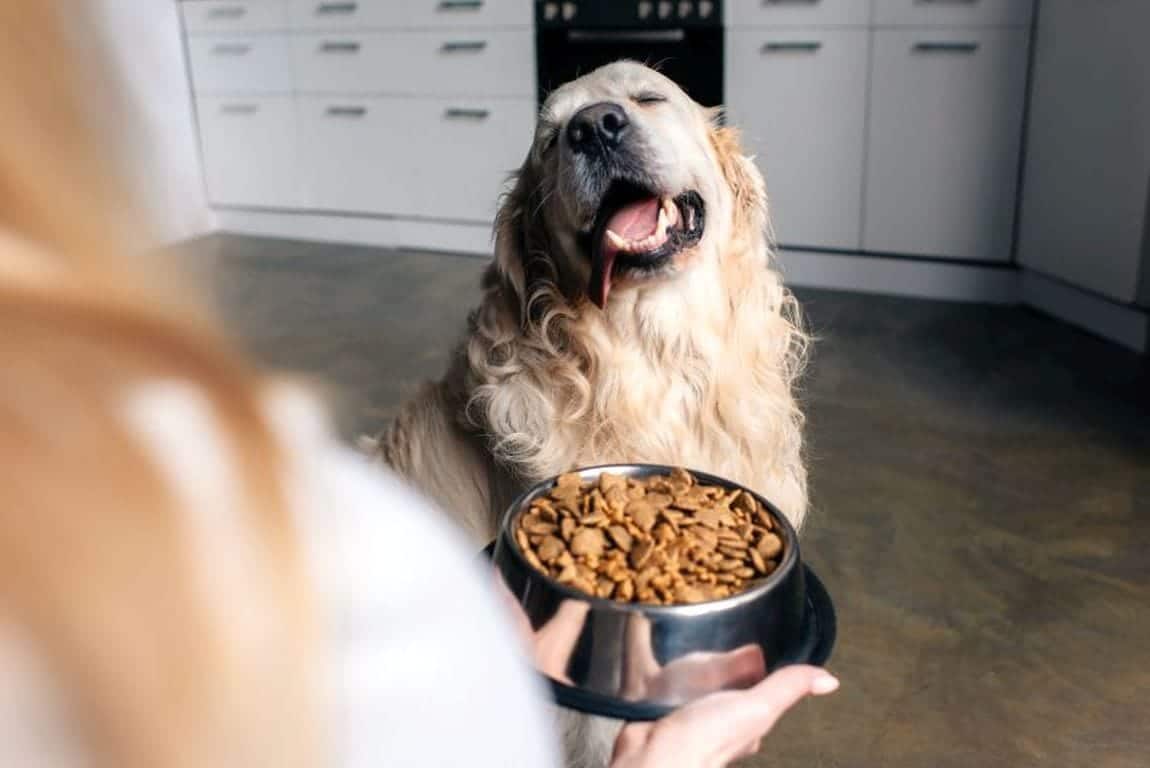Rice is a type of cereal grain. It’s a low-calorie carbohydrate with no fats, salts, or cholesterol. Commercial dog food manufacturers have embraced it as a low-cost alternative to traditional grains, allowing them to offer grain-free foods, which some pet parents prefer. But can your dogs eat rice pudding, rice flour, and cakes in the same way that humans do?
Yes, the answer is yes! Domesticated dogs descended from carnivorous ancestors who required strict animal protein diets. Dogs today are considered omnivores, which means they can consume grains and plants in their diets as long as they contain at least 75% animal proteins. As a result, many pet food formulas include both white and brown rice. Let’s take a closer look at rice and why it can benefit your dog’s health.
Introducing rice.
Rice is a staple food in over 100 countries worldwide. It is also one of the oldest cereal grains, dating back over 5,000 years. Rice is served at least once a day in many households. Rice comes in over 40,000 varieties, with many falling into one of two categories: white or brown.
White, brown, and wild rice are the most common dogs of dog food. There are many other common types of food, but they are costly and are rarely used in dog foods. Rice is made from seeds, which we call cereals or grains. Bulgur wheat, oats, corn, barley, millet, and quinoa are all closely related.
The nutritional value of rice is determined by how it is milled. The milling process removes the seed’s husk or hard outer coating, leaving only the thin bran or hull. Brown rice retains the hull or bran, which contains nutrients. Brown rice, on the other hand, is more difficult to digest, so dogs with digestive issues may experience diarrhea or constipation if they consume it.
When the hull and bran are removed, the sticky, starchier endosperm known as white rice is revealed. The removal of the bran also removes the majority of the nutrients. This white rice, on the other hand, is ideal for dogs suffering from gastrointestinal issues or diarrhea because it is much easier for them to digest.
Health Benefits of Rice for Dogs
“Can dogs eat rice pudding, rice flour, and cakes?” you may wonder. You’re probably attempting to assist your pet with gastrointestinal issues. White rice is an excellent grain for this situation because it is quick to prepare, easy to digest, and contains a sufficient amount of fiber. Rice aids in the binding of your dog’s stool in cases of diarrhea, but it also contains enough fiber to relieve constipation.
Can dogs consume white rice? White rice is generally the preferred variety when deciding what type of rice to feed your dog. White rice and brown rice are both derived from the same plant, with the primary distinction being how they are processed. Furthermore, white rice removes the germ and husk from the grain, removing the most nutrient-rich part of the rice and making it easier to digest.
White rice is the best variety to feed your dog because you’re feeding it less for nutrition and more for digestion. This is also true for questions such as “Can dogs eat jasmine rice?” and “Can dog eat basmati rice?”
The Dangers of Feeding Rice to Dogs
One risk associated with feeding rice to dogs is the possibility of allergic reactions. If your dog has allergies or sensitivities to rice or grain, it is best to keep them away from it. Too much rice can also cause gastrointestinal problems in dogs because their bodies struggle to digest all of the carbohydrates. This is why rice is only recommended in moderation for dogs.
Rice and Allergic Reactions in Dogs
Some dogs may develop allergies or intolerances to rice and other foods. If your dog has allergies, it’s always a good idea to consult with your veterinarian before introducing a new food. When you want to feed your dog rice, yeast allergies can be especially troublesome.
Rice intolerance or allergy symptoms include:
- Vomiting
- Itchy skin
- Inflamed paws or incessant licking of the paws
- Dry skin
- Skin rashes
- Hair loss such as hot spots
Can Dogs Have Rice
Yes, dogs can consume rice. You might have noticed rice as an ingredient in commercial dog foods. However, the rice should not be served daily; rice should be part of a varied diet that provides all of your dog’s nutritional needs. Dogs can eat rice in moderation if it is simply cooked with no seasonings or flavors and is included as part of your dog’s balanced diet.
Can Dogs Eat Brown Rice?
Yes, dogs can consume brown rice. Furthermore, because it retains the outer layer of the seed, which contains many important nutrients, this type of rice is more nutritious than white rice. Brown rice, on the other hand, maybe more difficult for your dog to digest for the same reason. This means that many veterinarians prefer white rice to brown rice for puppies with digestive issues.
Can Dogs Have Rice Cakes
Pet owners who are wondering if dogs can eat rice cakes will be relieved to learn that this food is suitable for canines. Puffed rice can be a safe source of carbohydrates for dogs, as long as it does not constitute the majority of their diet.
Plain puffed rice cakes are safe for dogs to eat as a low-calorie snack on occasion. Look for plain rice cakes with no added salt, spices, or artificial flavors when using rice cakes as dog treats. Read the ingredients label before sharing rice cakes with your dog—many flavorings or additives in human foods can be harmful to canines. Chewy steamed rice cakes made from rice flour, for example, are not suitable for dogs because they can pose a choking hazard.
Rice cakes should only be used to supplement a dog’s diet in small amounts because any human food can upset a dog’s sensitive stomach. Before incorporating non-dog food into a canine’s regular diet, always consult with a veterinarian. It is critical to note that 90% of a dog’s calories should come from dedicated dog food, with the remaining 10% coming from occasional human foods.
Can Dogs Eat Flavored Rice Cakes?
Dogs should not consume flavored rice cakes. The majority of flavored rice cakes contain dairy and sugar, both of which can be harmful to your dog’s health. Sugar not only raises blood sugar levels and causes weight gain, but it can also cause dental problems. Dairy is a popular ingredient that, while safe in small amounts, can cause painful indigestion in dogs suffering from lactose intolerance.
Can Dogs Have Rice Pudding
Rice pudding is safe for your dog to eat. Rice pudding is well-known to dogs. Also, rice pudding can be a treat if your pet is eating a healthy diet that meets its nutritional needs.
Rice pudding is a soft and creamy dessert made by cooking rice in milk. It has a smooth, velvety texture and a mild, sweet flavor. Can dogs, however, consume rice pudding?
Rice pudding contains 111 calories per 100g. Furthermore, rice pudding contains nutrients such as folate, magnesium, selenium, and thiamine. Rice pudding can help with blood sugar control, weight loss, and lowering the risk of cardiovascular disease.
Can Dogs Eat Flavored Rice Pudding?
Sugar-flavored rice pudding is safe for dogs to eat. However, keep in mind that they may have added sugar, honey, corn syrup, and other ingredients to the recipe that you do not want your dog to consume.
Can Dogs Have Rice Flour
Yes. Dog treats can be made with rice flour as an ingredient. It works well as a gluten-free substitute for wheat flour. Brown rice flour contains more nutrients than white rice flour.
Rice flour is made by grinding rice. It contains carbohydrates. Rice flour is occasionally used as a gluten-free substitute for whole wheat flour. White rice flour dog treats have a finer texture than brown rice flour, making them lighter.
Is Rice Harmful to Dogs?
Yes, dogs can eat rice. However, there may be some unanticipated side effects. A dog can eat rice and be safe as long as the owner knows they shouldn’t eat too much of it or stay on a strict diet for too long.
Dog owners should be aware of all the health benefits associated with feeding rice to their dogs, as this food is frequently given to sick pets or those who cannot tolerate other foods well due to allergies or gastrointestinal problems. If you’re thinking about adding more rice to your dog’s diet, make sure you understand both the risks and benefits so you can plan accordingly.
It is recommended that you consult with your veterinarian before giving your dog rice or any other new food, as they have a better understanding of your dog’s health.
How Much Rice Can My Dog Eat?
Dogs require a well-balanced diet. Most dog foods contain the recommended daily amount of calories and nutrients for your dog’s health. This means that rice can only account for 10% of their daily caloric intake. If you give them more, you risk gaining weight or developing diabetes.
Large dogs can consume approximately 13 cups of rice twice or three times per week. Smaller dogs should consume far fewer calories. Remember that these amounts are for dogs fed a balanced diet, with rice served as a treat or as an ingredient in their daily meals.
If your dog shows no signs of digestive distress, start with small amounts and gradually increase the portion size.
How to Feed Rice to Your Dog
The best way to feed rice to your dog is to give it to them completely raw. Can dogs consume cooked rice? Sure thing. You can cook the rice in a pot or a rice cooker, but avoid adding any other ingredients, especially salt, garlic, onions, or additional oils. These additives are harmful to your dog and may aggravate any gastrointestinal issues he is experiencing.
Can dogs eat rice whenever they want? No, dogs should not overeat rice, even if it appears to help with stomach issues. The 10% rule is a good way to determine how much rice is appropriate for your dog. The rule states that treats or foods other than regular dog food should not account for more than 10% of your dog’s daily caloric intake. Consult your veterinarian or use an online calculator to determine how much this would cost for your dog.
Also, keep in mind that dogs do not require rice. Is rice suitable for dogs? Sure. Is it necessary for dogs to consume rice? Certainly not. Your dog can live a long and healthy life without ever eating a grain of rice. You don’t have to feed it to them just because it’s potentially nutritious. The best diet for your dog is to stick to high-quality dog food that your veterinarian recommends.
Conclusion
Yes, dogs can eat rice, and rice is frequently used in commercial dog foods. Small amounts of rice are often recommended for dogs who are sick or recovering from surgery because it is gentle on their stomachs. It is recommended that you only give your dog rice in moderation and not overfeed them rice as it can be uncomfortable for their digestion and lead to weight gain.
Frequently Asked Questions
How much rice is OK for a dog?
Feed no more than a quarter cup of rice as an extra for a large dog and a tablespoon or two for a smaller dog. Rice is typically mixed with a small amount of lean protein, such as plain, shredded chicken breast, as part of a bland diet for stomach upset.
Can rice upset a dog's stomach?
Rice and grains in general should be avoided with your pet, as they are gut irritants with no nutritional value.
Is rice good for dogs everyday?
Yes, dogs can consume rice. You might have noticed rice as an ingredient in commercial dog foods. But you shouldn’t feed your dog rice every day. Instead, rice should be part of a varied diet that gives your dog all the nutrients it needs.
Can I feed my dog chicken and rice everyday?
It is not a good idea to keep your dog on a daily diet of chicken and rice for an extended period of time. Even though this dish is very healthy for dogs, it doesn’t give them all of the nutrients they need. They get those from other things, like red meat and vegetables.






